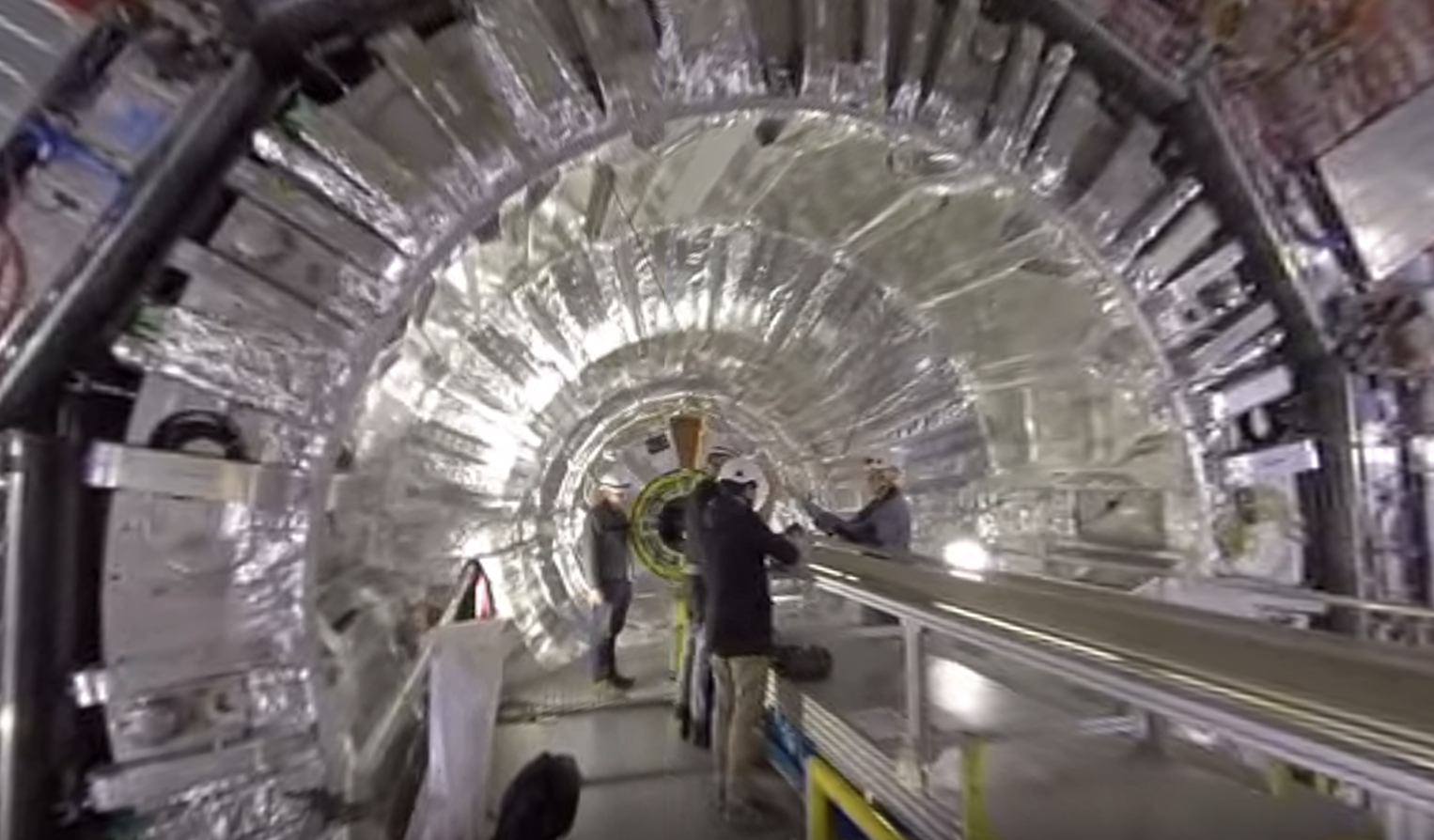Detector development
CMS is one of the multipurpose detectors at the LHC. It consists of different layers of detectors optimized for position and energy measurements of particles produced in collisions. An all-silicon tracker, an electromagnetic calorimeter, and a hadronic sampling calorimeter are all contained within a large-bore 3.8T superconducting solenoid. Beyond the solenoid there are four layers of muon detectors. The CMS tracker is composed of an inner pixel detector and an outer silicon strip detector. The pixel detector is at the heart of CMS. It consists of four-barrel layers (BPIX) and three forward disks on each side (FPIX). The pixel detector is used for electron and photon identification and muon reconstruction. Its precision resolution is crucial for primary vertex and pileup vertex reconstruction, and identification of long-lived leptons and B-hadrons that traverse on the order of millimeters before decaying. In 2017, a newly upgraded pixel detector replaced the previous detector that had been taking data since 2009. Our UZH group was one of the main contributors to the construction of the original as well as the upgraded pixel detector, called the phase-0 and phase-1 pixel detector, respectively. The newly installed phase-1 pixel detector was designed to maintain high physics performance, which otherwise would be compromised by pileup, radiation-induced effects, and hit inefficiencies due to the higher instantaneous luminosities from the LHC. The phase-1 pixel detector is scheduled to record data until the start of the long shutdown (LS3) in 2025.
The LHC program includes a series of upgrades to the energy and luminosity that are being planned for the next decade which will increase the search potential for new physics. In 2015, the LHC increased its center of mass energy from 8 to 13 TeV. By the end of 2018 the LHC delivered more than 140 fb-1 of integrated luminosity. After a second long shutdown (LS2) spanning 2019 and 2021, the LHC plans to operate at instantaneous luminosities of 2x1034 cm-2s-1 and deliver at least an additional 150 fb-1 of collisions through 2024. After 2025, the LHC machine will be upgraded to deliver higher luminosity (HL-LHC), such that the peak luminosity will double and deliver 3000 fb-1 of integrated luminosity by 2040. The CMS collaboration is planning a comprehensive upgrade of the detector to cope with this increased data rate and amount of radiation. The largest component of this upgrade is the complete replacement of the CMS tracker, called phase-2 tracker. The upgraded CMS detector will record data at significantly higher collision rates, allowing for the measurement of rarer processes and smaller deviations from the SM, as well as providing access to heavier particle states with increased precision. The UZH CMS group actively operates and maintains the installed phase-1 pixel detector and heavily involved in the design and construction of the phase-2 pixel detector of CMS.
The phase-2 tracker of the CMS detector will feature increased forward acceptance, increased radiation hardness, higher granularity, and be compatible with the higher expected data rates and the longer trigger latency requirements. The baseline design of the CMS pixel detector is described in the phase-2 CMS tracker TDR produced in 2017. The detector is comprised of a barrel part with four layers (TBPX), eight small double-discs per side (TFPX), and four large double-discs per side (TEPX). With TEPX, the number of detection layers will ensure that particles originating from the luminous region traverse more than eight layers of active detector modules for eta up to 3.5, and more than six layers up to eta < 4.0, providing a more robust tracking performance, over a larger rapidity acceptance, than the current detector.


